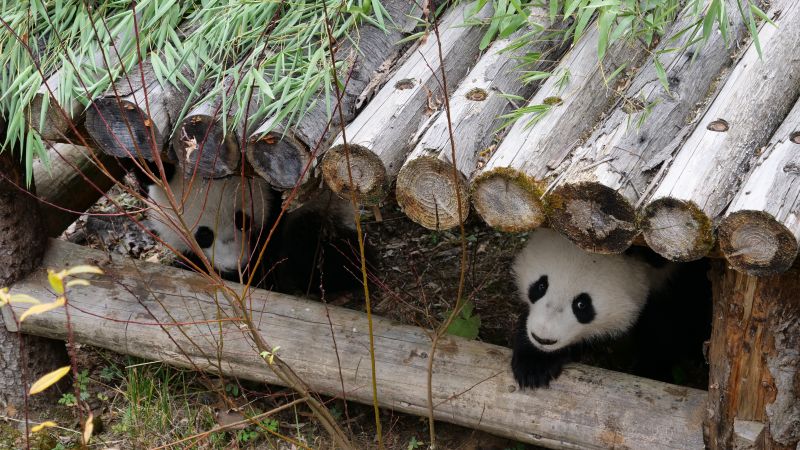omak+manta+haya| 全国政协召开远程协商会 围绕“深化人工智能多场景应用,提升现代产业高质量发展水平”协商议政 王沪宁主持
omak+manta+haya
 Omak, Manta, and Haya: An Extraordinary Trio
Omak, Manta, and Haya: An Extraordinary Trio
Introduction:
In the vast oceans, hidden beneath the waves, lie some of the most extraordinary creatures that have ever existed. Among them, three stand out for their exceptional abilities and unique characteristics - Omak, Manta, and Haya. Let us embark on a captivating journey to explore these fascinating beings. This article will delve into their distinct features and shed light on their importance in the underwater ecosystem.
1. Omak: The Master of Camouflage
Omak, also known as the mimic octopus, captivates scientists and marine enthusiasts with its unparalleled ability to mimic other sea creatures. This brilliant cephalopod possesses extraordinary camouflage skills, adapting seamlessly to its environment. With almost supernatural abilities, it can transform its appearance to mimic various marine organisms like venomous creatures or harmless landscapes, warding off predators effectively. Through its exquisite mimicry, Omak secures its survival by blending effortlessly into any surroundings.
Moreover, Omak's intelligence is staggering, making it capable of solving complex puzzles and finding creative solutions to escape tricky situations. The creature's advanced problem-solving skills and adaptability not only ensure its individual survival but also contribute significantly to the evolutionary continuity of its species. Understanding Omak's remarkable abilities can unlock novel insights into the world of camouflage and aid in the development of cutting-edge technologies inspired by nature.
2. Manta: The Graceful Giant
The majestic Manta ray, with its wide wingspan and graceful moves, commands attention wherever it glides through the ocean depths. These gentle giants captivate both researchers and tourists alike, leaving an everlasting impression of their beauty and grace. Despite their immense size, Mantas are harmless to humans and possess a peaceful nature, relying on plankton as their primary source of sustenance.
Manta rays possess extraordinary filtration systems, enabling them to consume substantial amounts of tiny food particles, playing a vital role in maintaining the ecological balance of the oceans. They are known as the cleaning experts of the seas, voraciously feeding on microscopic organisms and thus preventing overgrowth in certain marine populations. Additionally, as they navigate vast distances annually, these magnificent creatures transport organic matter between habitats, fostering nutrient distribution and supporting the overall health of marine ecosystems.
3. Haya: The Environmental Indicator
Haya, a tiny but essential species of fish, is crucial to understanding the state of underwater ecosystems. With its well-developed sensory organs, this vigilant species monitors water quality and acts as an environmental indicator, providing valuable insights into the health of marine habitats. The presence or absence of Haya can indicate pollution levels, nutrient imbalances, or even the effects of climate change.
Furthermore, Haya plays a pivotal role as a prey item for larger marine predators, helping to maintain the delicate balance within the food chain. Their population dynamics offer clues about the overall state of oceanic biodiversity, making them a key species for conservation efforts. Protecting Haya and understanding their habitat requirements can help preserve marine environments and create sustainable practices for the future.
Conclusion:
In the mesmerizing realm of the oceans, Omak, Manta, and Haya showcase remarkable characteristics that contribute significantly to the intricate web of marine life. Through their exceptional abilities, these three species play distinct roles in maintaining ecological equilibrium, inspiring awe and admiration in all who learn about them. Understanding and preserving these extraordinary creatures is crucial for the conservation and sustenance of our oceans for generations to come.
新华社北京4月26日电 全国政协26日在京召开远程协商会,中共中央政治局常委、全国政协主席王沪宁主持会议。他表示,中共十八大以来,以习近平同志为核心的中共中央准确把握新一轮科技革命和产业变革趋势,把新一代人工智能作为推动科技跨越发展、产业优化升级、生产力整体跃升的驱动力量,推动我国人工智能科技创新实现新突破、人工智能产业快速发展、与现代产业融合应用深度拓展,在培育新质生产力、建设现代化产业体系、推动高质量发展上迈出坚实步伐。人民政协要深入学习领会习近平总书记关于发展人工智能的重要论述和中共中央决策部署,更好把握协商议政的方向、重点、落点,增强建言献策的针对性和实效性。
王沪宁表示,广大政协委员要跟踪我国人工智能发展应用进程,围绕推进人工智能领域基础研究和原始创新、人工智能和产业发展深度融合、人工智能在民生保障和社会治理等领域的深度应用、人工智能治理和国际合作等方面的重要问题深化研究,努力提出针对性、操作性强的对策建议,助力人工智能更好赋能现代化产业体系建设和高质量发展、更好创造和服务人民美好生活。要结合开展委员履职“服务为民”活动、“三下乡”活动等,运用“委员科学讲堂”等平台,广泛宣传新时代我国人工智能发展和应用取得的成就,增强全社会创新热情和创造活力。
全国政协委员王志刚、李萌、朱松纯、周鸿祎、王坚、钱锋、马军胜、孙志强和专家刘庆峰、朱磊分别在全国政协机关和上海、浙江、安徽会场以及北京、广东等地,通过视频连线等方式发言。大家认为,要强化前瞻引领性研究,加强自主可控技术创新,探索人工智能多场景应用,发展垂直化、产业化大模型,以高水平规模化应用带动人工智能融合发展。要加强数据和算力要素共享整合,让人工智能为新型工业化注入新动力。要完善激励人工智能创新的政策和重点专业场景的伦理规范、安全标准体系,高质量发展现代产业体系。
中共中央政治局委员、全国政协副主席石泰峰,全国政协副主席胡春华、邵鸿、陈武、王东峰、朱永新出席会议。中央网信办、国家发展改革委、科技部、工业和信息化部负责同志介绍有关情况,并同政协委员协商交流。
zaixinfangjiagehuanbishangzhangde15gechengshizhong,shanghai、beijing、xianpaimingqiansan,fenbieshangzhang0.5%、0.4%he0.4%;tongbizhangfuzuigaodeshichengdou、shanghai、changsha,fenbieshangzhang5.8%、4.4%he3.6%。tongbilaikan,mudanjiangtonghuanbixiadiezuiweiyanzhong,tongbixiadiele4.8%,huanbixiadie1%,junweidiefudiyi。在(zai)新(xin)房(fang)价(jia)格(ge)环(huan)比(bi)上(shang)涨(zhang)的(de)1(1)5(5)个(ge)城(cheng)市(shi)中(zhong),(,)上(shang)海(hai)、(、)北(bei)京(jing)、(、)西(xi)安(an)排(pai)名(ming)前(qian)三(san),(,)分(fen)别(bie)上(shang)涨(zhang)0.(.)5(5)%(%)、(、)0.(.)4(4)%(%)和(he)0.(.)4(4)%(%);(;)同(tong)比(bi)涨(zhang)幅(fu)最(zui)高(gao)的(de)是(shi)成(cheng)都(dou)、(、)上(shang)海(hai)、(、)长(chang)沙(sha),(,)分(fen)别(bie)上(shang)涨(zhang)5(5).(.)8(8)%(%)、(、)4(4).(.)4(4)%(%)和(he)3(3).(.)6(6)%(%)。(。)同(tong)比(bi)来(lai)看(kan),(,)牡(mu)丹(dan)江(jiang)同(tong)环(huan)比(bi)下(xia)跌(die)最(zui)为(wei)严(yan)重(zhong),(,)同(tong)比(bi)下(xia)跌(die)了(le)4(4).(.)8(8)%(%),(,)环(huan)比(bi)下(xia)跌(die)1(1)%(%),(,)均(jun)为(wei)跌(die)幅(fu)第(di)一(yi)。(。)








